Find the Best Sump Pump Installation Services in USA
Protect Your Home from Flooding
Discover More Basement Waterproofing Solutions
HVAC Services
Find trusted HVAC companies near you. Get quotes for AC repair, furnace repair, HVAC installation, and maintenance services from the best local HVAC companies.
24/7 HVAC
Get fast and reliable emergency HVAC services 24/7. We respond quickly to heating and cooling emergencies, ensuring your comfort is restored promptly.
Commercial HVAC
Experienced commercial HVAC contractors for all your business needs. We handle installation, repair, and maintenance of heating, ventilation, and air conditioni
New AC Installation
Upgrade to a new, energy-efficient air conditioner. We connect you with qualified HVAC technicians for seamless air conditioner installation services.
Heat Pump System Installation
Enjoy year-round comfort with a heat pump. Find certified HVAC professionals for expert heat pump installation.
Heat Pump Service
Keep your heat pump in top condition. Our network includes qualified HVAC technicians who specialize in heat pump repair.
Heating System Repair
Get your furnace repaired quickly and efficiently. We connect you with trusted HVAC professionals who specialize in furnace repair.
On-Demand Water Heater Installation
Upgrade to endless hot water and save on energy bills. Find certified plumbers for tankless water heater installation.
Boiler Installation
Need a new boiler for your home? Find reliable HVAC technicians for expert boiler installation.
Tankless Water Heater Repair
Expert tankless water heater repair services. We can diagnose and fix any issues with your on-demand water heater, ensuring endless hot water.
Fix My Sump Pump
Expert sump pump repair and maintenance to keep your basement dry. We connect you with qualified plumbers who specialize in sump pump repair.
Fix My AC
Get your AC fixed quickly. Find certified HVAC technicians near you who specialize in air conditioner repair.
Duct Cleaning
Improve your indoor air quality and HVAC efficiency. We connect you with professional air duct cleaning companies.
Boiler Maintenance
Expert boiler repair services for homes and businesses. We can help you find reliable boiler repair specialists to troubleshoot and repair any issues with your
Sump Pump Installation Made Easy

- Tell Us Your Needs
- Provide information about your property and any existing drainage systems.
- Get Matched with Installers
- We'll connect you with experienced sump pump installers near you .
- Compare Quotes & Choose
- Select the right contractor for your project and budget.
- Schedule Your Installation
- Protect your home with a professional sump pump installation.
Why Choose HVACCompaniesHub.com for Sump Pump Installation?
The smarter way to find Sump Pump Installation pros

- Vetted and Licensed Professionals
- We carefully screen all sump pump installers on our platform to ensure they are licensed, insured, and experienced. We connect you with qualified experts.
- Competitive Quotes & Transparent Pricing
- Compare quotes from multiple sump pump installers to find the best price. Our platform allows you to compare estimates and make informed decisions.
- Wide Selection of Sump Pumps & Systems
- We work with installers who offer a variety of sump pump systems, from basic models to advanced systems with features like water level alarms and automatic backup power. We have a solution for all needs.
- Expert Advice & Guidance
- Our network of sump pump professionals can help you choose the best sump pump system for your home or business, considering factors such as the extent of potential water damage. Get expert advice and guidance throughout the installation process.
- Hassle-Free Process
- We make it easy and convenient to find and hire a qualified sump pump installer. Our process makes it easy to connect with local experts.
- Free To Use
- HVACCompaniesHub.com is completely free for homeowners and businesses. Find sump pump installation professionals without any charges or commitments. Connect with local experts now.
Basement Waterproofing for Businesses
Commercial Sump Pump Installation
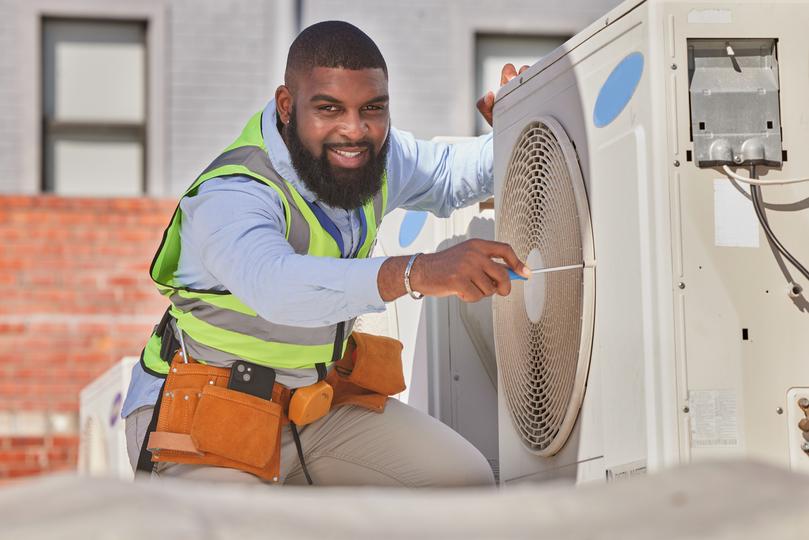
Best HVAC Companies Near Me
Find trusted HVAC companies near you. Get quotes for AC repair, furnace repair, HVAC installation, and maintenance services from the best local HVAC companies.

Emergency HVAC
Get fast and reliable emergency HVAC services 24/7. We respond quickly to heating and cooling emergencies, ensuring your comfort is restored promptly.
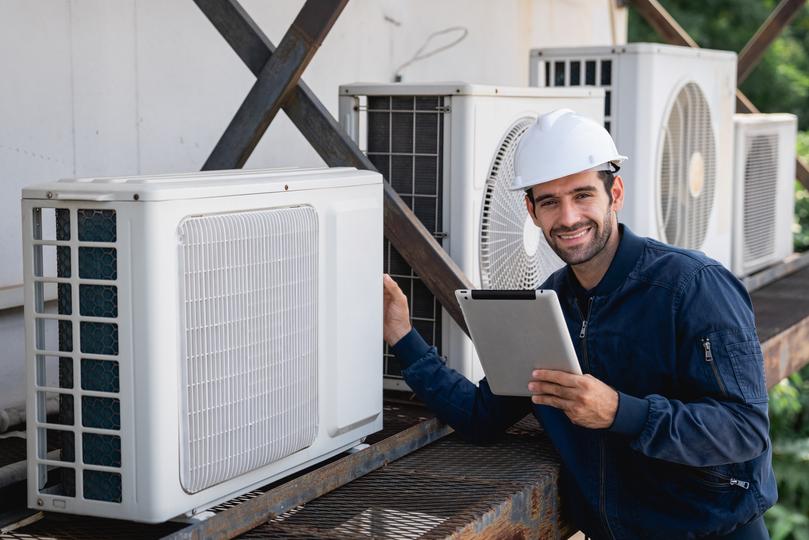
Commercial HVAC
Experienced commercial HVAC contractors for all your business needs. We handle installation, repair, and maintenance of heating, ventilation, and air conditioni

Air Conditioner Replacement
Upgrade to a new, energy-efficient air conditioner. We connect you with experienced HVAC technicians for seamless air conditioner installation services.

Heat Pump Services
Enjoy year-round comfort with a heat pump. Find qualified HVAC professionals for expert heat pump installation.

Heat Pump Maintenance
Keep your heat pump in top condition. Our network includes experienced HVAC technicians who specialize in heat pump maintenance.

Furnace Repair
Get your furnace fixed quickly and efficiently. We connect you with trusted HVAC professionals who specialize in heating system repair.

On-Demand Water Heater Installation
Upgrade to endless hot water and save on energy bills. Find expert plumbers for tankless water heater installation.

Replace My Boiler
Need a new boiler for your home? Find reliable HVAC technicians for expert heating system replacement.

Tankless Water Heater Repair
Expert tankless water heater repair services. Our network of qualified plumbers can diagnose and fix any issues with your on-demand water heater, guaranteeing en
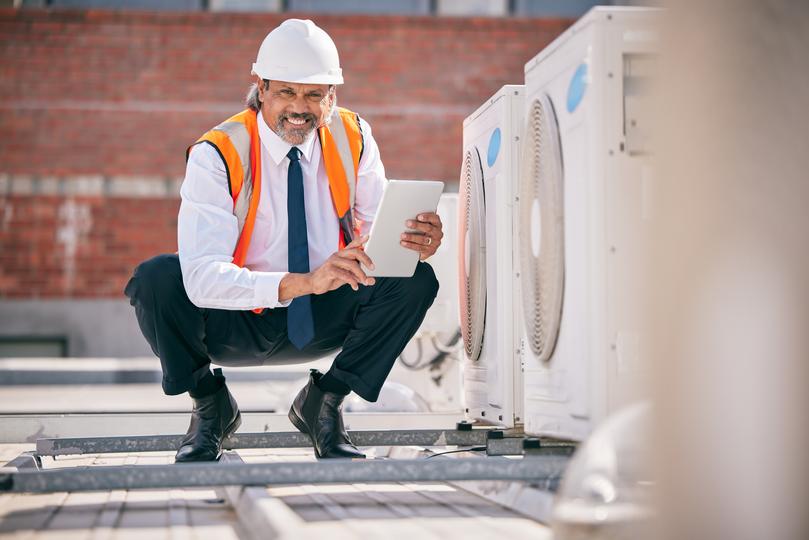
AC Repair Near Me
Get your AC repaired quickly. Find experienced HVAC technicians near you who specialize in AC service.

Duct Cleaning
Improve your indoor air quality and HVAC efficiency. We connect you with reliable air duct cleaning companies.

Boiler Service
Expert boiler repair services for homes and businesses. We can help you find reliable boiler repair specialists to diagnose and fix any issues with your boiler,
Sump Pump Installation for Homes
Residential Sump Pump Installation

Best HVAC Companies Near Me
Find trusted HVAC companies near you. Get quotes for AC repair, furnace repair, HVAC installation, and maintenance services from the best local HVAC companies.

After Hours HVAC
Get fast and reliable emergency HVAC services 24/7. We respond quickly to heating and cooling emergencies, ensuring your comfort is restored promptly.

AC Installation
Upgrade to a new, energy-efficient air conditioner. We connect you with qualified HVAC technicians for seamless AC replacement services.

Install a Heat Pump
Enjoy year-round comfort with a heat pump. Find certified HVAC professionals for expert heat pump installation.

Heat Pump Service
Keep your heat pump in top condition. Our network includes experienced HVAC technicians who specialize in heat pump maintenance.

Repair My Furnace
Get your furnace repaired quickly and efficiently. We connect you with trusted HVAC professionals who specialize in furnace repair.

Tankless Water Heater Install
Upgrade to endless hot water and save on energy bills. Find expert plumbers for on-demand water heater services.

Replace My Boiler
Need a new boiler for your home? Find trusted HVAC technicians for expert boiler installation.
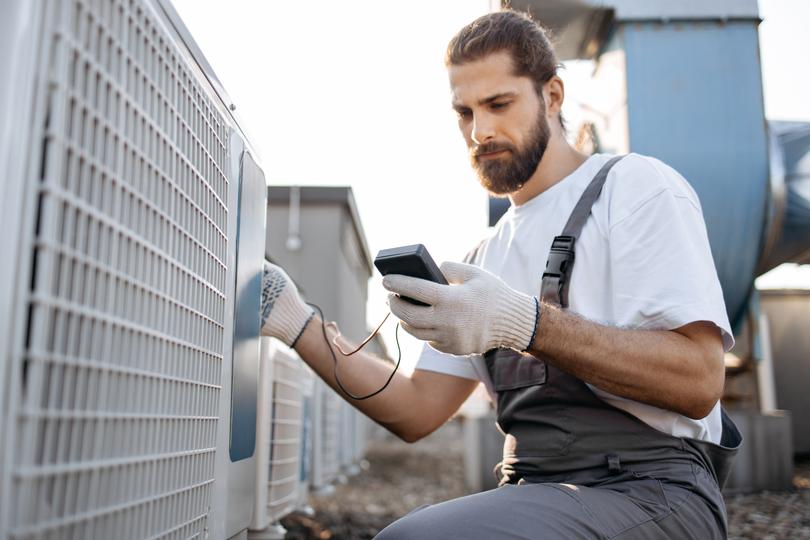
Sump Pump Installation
Protect your basement from flooding. Find qualified plumbers for expert basement waterproofing services.

Tankless Water Heater Repair
Expert tankless water heater repair services. We can troubleshoot and repair any issues with your on-demand water heater, ensuring endless hot water.
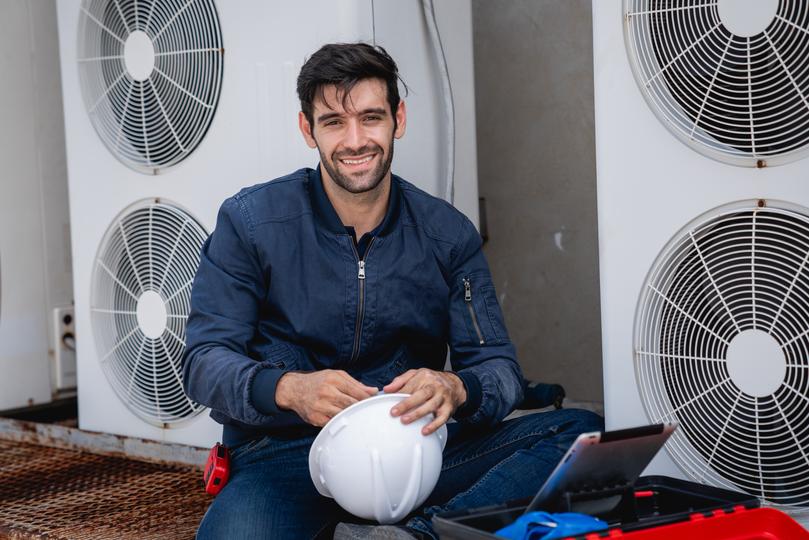
Sump Pump Repair
Expert sump pump repair and maintenance to keep your basement dry. We connect you with qualified HVAC technicians who specialize in sump pump repair.

Air Conditioner Repair
Get your AC fixed quickly. Find certified HVAC technicians near you who specialize in AC service.

Duct Cleaning
Improve your indoor air quality and HVAC efficiency. We connect you with professional air duct cleaning services.

Boiler Maintenance
Expert boiler repair services for residential and commercial properties. We can help you find reliable boiler repair specialists to diagnose and fix any issues
Ready to Install a Sump Pump?
Find the Best Sump Pump Installers on HVACCompaniesHub.com!
Sump Pump Installation Glossary
Sump Pump
Sump Basin
Submersible Sump Pump
Pedestal Sump Pump
Check Valve
Discharge Pipe
Float Switch
Backup Power
Water Level Alarm
French Drain
Perimeter Drain
Water Table
Hydrostatic Pressure
Basement Waterproofing
Drainage System
Frequently Asked Questions About Sump Pump Installation
What is a sump pump and how does it work?
How much does sump pump installation cost?
How long does it take to install a sump pump?
What are the different types of sump pumps?
- Submersible Sump Pumps: These pumps are placed inside the sump basin and are designed for installations where space is limited. They typically last longer as well.
- Pedestal Sump Pumps: These pumps have the motor sitting on a pedestal above the water, with a pipe extending down into the water. They are generally less expensive than submersible pumps, but can be noisier.
Do I need a sump pump?
- A damp or musty basement
- Water stains or efflorescence on basement walls
- Mold or mildew growth in your basement
- Standing water in your yard or around your foundation
- A history of flooding or water seepage in the basement
- Living in an area with a high water table
What are the signs that my sump pump needs to be replaced?
- Age: Sump pumps typically last around 10 years , so if yours is older, it's wise to consider replacing it .
- Frequent Cycling: If your pump turns on and off frequently, even when there's no heavy rainfall, it may be overworked and nearing failure .
- Loud Noises: Unusual grinding, rattling, or gurgling noises can indicate mechanical issues and may require repair or replacement.
- Visible Rust or Corrosion: Rust and corrosion can significantly shorten the life of your sump pump.
- Noisy Motor: A loud motor can signal bearing problems or other mechanical issues.
- Excessive Vibration: If your pump vibrates excessively when running, it could be a sign of a problem .
- Failure to Turn On: If your sump pump doesn't start when the water level rises , it may be due to a faulty float switch, a clogged intake, or a burnt-out motor .
- Continuous Running: If your pump won't turn off, there could be a variety of reasons.
- Water Backups: If water is backing up into your basement, it indicates that your sump pump is not working effectively and needs to be inspected .
What are the benefits of installing a sump pump?
- Prevents Basement Flooding: Sump pumps effectively remove excess water from your basement, keeping it dry and preventing flooding.
- Reduces Mold and Mildew Growth: Excess moisture can lead to mold and mildew growth, which can cause respiratory issues and allergies. A sump pump helps maintain a drier basement, reducing the risk of mold and mildew.
- Protects Foundation: Water in your basement can weaken the foundation of your house. A sump pump removes this water, helping to maintain a strong and stable foundation.
- Increases Property Value: A dry basement is generally considered increasing the value of your home. . Installing a sump pump is a sign that you've taken steps and can make your property more attractive.
- Reduces Musty Odors: Excess moisture often leads to musty odors in the basement. A sump pump helps address this problem by controlling excess water.
- Peace of Mind: Knowing that your basement is protected against water damage offers reassurance, especially during severe weather.
How do I choose the right sump pump for my home?
- Type: Decide between a submersible or pedestal pump, based on your individual needs.
- Horsepower: The horsepower of the motor determines how quickly and efficiently the pump removes water. Choose a pump that can handle the volume of water you expect.
- Features: Additional features enhance protection and reliability. A water level alarm can alert you if the water level rises too high, while a battery backup system will keep the pump running during a power outage.
- Budget: Sump pumps vary in price, so it is important to select a unit that fits your budget. However, it is better to invest in a high-quality pump that will provide reliable performance for years to come than to choose a cheaper model that may fail when you need it most.
Where should a sump pump be installed?
What is a sump pit?
What is a check valve, and why is it important for my sump pump?
How do I know what size sump pump I need?
What is a backup sump pump system, and do I need one?
How often should I test my sump pump?
Can I install a sump pump myself?
What is the best way to dispose of an old sump pump?
How can I tell if my sump pump is working?
What should I do if my sump pump keeps running?
- A stuck switch: Check that the switch moves freely.
- A faulty check valve: A malfunctioning check valve can allow water to flow back into the sump pit, causing the pump to cycle on and off more frequently than normal.
- A clogged discharge line: A clogged discharge line restricts water flow and can cause the pump to overwork and run continuously.
- A switch problem: Check the functionality of the switch itself.
How much does a sump pump cost?
How long do sump pumps last?
What is the difference between a primary and a backup sump pump?
Can I use a generator with my sump pump?
How do I maintain my sump pump?
- Check for debris: Regularly check the sump pit for debris, such as leaves, dirt, and small stones, that could clog the pump or the discharge line. Keep the pit free and clear of objects.
- Test the pump: Pour a bucket of water into the sump pit to test the pump. The pump should turn on automatically when the water level rises and turn off when the water level drops. If it doesn't, call for professional service.
- Clean the pump: Clean the pump periodically, according to the manufacturer's recommendations. . This typically involves unplugging the pump, removing it from the pit, and cleaning the intake screen and any other accessible parts.
- Inspect the discharge line: Make sure the discharge line is clear and unobstructed. Water should be able to flow freely from the pump to the discharge point.
- Check the check valve: Inspect and clean the valve to ensure that it's functioning correctly. A faulty check valve can cause the pump to cycle excessively and shorten its lifespan.
- Check the power cord: Inspect the power cord for any damage or wear and tear. If the cord is frayed, consider replacing it.
- Schedule professional maintenance: Consider scheduling an annual inspection and maintenance service with a qualified plumbing professional. They can perform a more thorough inspection and identify any potential problems before they become major issues..
What is the best type of sump pump for my home?
- Submersible Sump Pumps: Submersible sump pumps are placed inside the sump basin, fully submerged in water. They are typically more energy-efficient than pedestal pumps and operate more quietly. . These are a good option for homeowners concerned about noise levels. However, submersible pumps can be more difficult to access for maintenance or repair.
- Pedestal Sump Pumps: Pedestal sump pumps are mounted above the sump basin, with a motor located above the water level and a intake extending down into the basin. Pedestal pumps are generally less expensive than submersible pumps and are easier to service . However, they tend to be noisier than submersible pumps, and they take up more space..
- Battery Backup Sump Pumps: Battery backup sump pumps provide extra protection in case of a power outage. They have a battery that kicks in automatically when the power goes out, ensuring that the pump continues to operate. . They're usually a bit more pricey. They can be added to an existing sump pump system or installed as part of a new system.
- Combination Sump Pumps: A combination system enhances reliability and resilience. The primary pump is usually a submersible pump that handles routine water removal, while the secondary pump is a battery backup that takes over during power outages. Combination systems provide greater peace of mind, though they come at a premium cost.
- Water-Powered Backup Sump Pumps: An alternative to battery-powered units, these harness water pressure for operation. They're an environmentally friendly choice and are relatively inexpensive. However, they do consume a significant amount of water, and their flow rate is generally lower than electric sump pumps.
What is a sump pump and how does it work?
How much does sump pump installation cost?
How long does it take to install a sump pump?
What are the different types of sump pumps?
- Submersible Sump Pumps: These pumps are placed underwater the sump basin and are generally quieter and more energy-efficient.
- Pedestal Sump Pumps: These pumps have the motor mounted above the sump basin , with a pipe extending down into the water. This design allows for easier maintenance and repair.
Do I need a sump pump?
- A damp or musty basement
- Water stains or efflorescence on basement walls
- Mold or mildew growth in your basement
- Standing water in your yard or around your foundation
- A history of flooding or water seepage in the basement
- Living in an area with a high water table
What are the signs that my sump pump needs to be replaced?
- Age: Sump pumps typically last around 10 years , so if yours is older, it's wise to consider replacing it .
- Frequent Cycling: If your pump turns on and off too often , even when there's no heavy rainfall, it may be a sign that the pump is too small for your needs or there's an issue with the float switch.
- Loud Noises: Unusual sounds can indicate mechanical issues and may require repair or replacement.
- Visible Rust or Corrosion: Rust and corrosion can weaken the pump and eventually lead to failure.
- Noisy Motor: A loud motor can signal bearing problems or other mechanical issues.
- Excessive Vibration: If your pump vibrates excessively when running, it could be a sign of a problem .
- Failure to Turn On: If your sump pump fails to turn on, it may be due to a faulty float switch, a clogged intake, or a burnt-out motor .
- Continuous Running: If your pump won't turn off, there could be a variety of reasons.
- Water Backups: If water is backing up into your basement, it indicates that your sump pump is malfunctioning.
What are the benefits of installing a sump pump?
- Prevents Basement Flooding: Sump pumps effectively remove excess water from your basement, keeping it dry and preventing flooding.
- Reduces Mold and Mildew Growth: Excess moisture can lead to mold and mildew growth, which can cause respiratory issues and allergies. A sump pump helps control moisture levels , reducing the risk of mold and mildew.
- Protects Foundation: Over time, water damage can compromise the structural integrity of your home. A sump pump prevents this from happening by keeping the foundation dry.
- Increases Property Value: A dry basement is thought to be increasing the value of your home. . Installing a sump pump is a sign that you've taken steps and can help differentiate it in the real estate market.
- Reduces Musty Odors: Excess moisture often leads to musty odors in the basement. A sump pump helps address this problem by controlling excess water.
- Peace of Mind: Knowing that your basement is protected against water damage can provide peace of mind, especially during periods of heavy rainfall or snowmelt.
How do I choose the right sump pump for my home?
- Type: Decide between a submersible or pedestal pump, based on your individual needs.
- Horsepower: The horsepower of the motor determines how quickly and efficiently the pump removes water. Choose a pump that can handle the volume of water you expect.
- Features: Consider features such as a built-in alarm, automatic backup power, and a check valve. A water level alarm can alert you if the water level rises too high, while a battery backup system will keep the pump running during a power outage.
- Budget: Sump pumps vary in price, so it is important to select a unit that fits your budget. Choose wisely, your decision can affect how well your home is protected from water damage.
Where should a sump pump be installed?
What is a sump pit?
What is a check valve, and why is it important for my sump pump?
How do I know what size sump pump I need?
What is a backup sump pump system, and do I need one?
How often should I test my sump pump?
Can I install a sump pump myself?
What is the best way to dispose of an old sump pump?
How can I tell if my sump pump is working?
What should I do if my sump pump keeps running?
- A stuck switch: The float switch may be stuck in the 'on' position, causing the pump to run continuously. .
- A faulty check valve: Inspect the check valve for proper operation.
- A clogged discharge line: A clogged discharge line restricts water flow and can cause the pump to overwork and run continuously.
- A switch problem: Check the functionality of the switch itself.
How much does a sump pump cost?
How long do sump pumps last?
What is the difference between a primary and a backup sump pump?
Can I use a generator with my sump pump?
How do I maintain my sump pump?
- Check for debris: Regularly check the sump pit for debris, such as leaves, dirt, and small stones, that could clog the pump or the discharge line. Keep the pit free and clear of objects.
- Test the pump: Test the activation of your sump pump regularly. The pump should turn on automatically when the water level rises and turn off when the water level drops. If the pump does not turn on or off properly, contact a qualified technician for repair.
- Clean the pump: Clean the pump every three to six months. This typically involves unplugging the pump, removing it from the pit, and cleaning the intake screen and any other accessible parts.
- Inspect the discharge line: Make sure the discharge line is clear and unobstructed. Water should be able to flow freely from the pump to the discharge point.
- Check the check valve: Inspect and clean the valve to ensure that it's functioning correctly. A faulty check valve can cause the pump to cycle excessively and wear out more quickly .
- Check the power cord: Inspect the power cord for any damage or wear and tear. If the cord is damaged, replace it promptly..
- Schedule professional maintenance: Annual service by a professional is a good idea A technician will catch potential problems and ensure optimal pump performance.
What is the best type of sump pump for my home?
- Submersible Sump Pumps: Submersible sump pumps are placed inside the sump basin, fully submerged in water. They are typically more energy-efficient than pedestal pumps and operate more quietly. . These are a good option for homeowners concerned about noise levels. Because they're immersed in water, access for servicing can be more cumbersome.
- Pedestal Sump Pumps: Pedestal sump pumps are mounted above the sump basin, with a motor located above the water level and a pipe extending down into the basin. Pedestal pumps are a budget-friendly alternative and are more accessible. However, they tend to be noisier than submersible pumps, and they take up more space..
- Battery Backup Sump Pumps: Battery backup sump pumps are critical in locations where power is frequently disrupted. They have a battery that kicks in automatically when the power goes out, ensuring that the pump continues to operate. . They're usually a bit more pricey. They can be added to an existing sump pump system or installed as part of a new system.
- Combination Sump Pumps: Combining the best of both worlds, combination sump pumps offer dual functionality by incorporating both a primary and a backup pump. The primary pump is usually a submersible pump that handles routine water removal, while the secondary pump is a battery backup that takes over during power outages. Combination systems provide greater peace of mind, though they come at a premium cost.
- Water-Powered Backup Sump Pumps: An alternative to battery-powered units, these harness water pressure for operation. They're an environmentally friendly choice and are relatively inexpensive. However, they do consume a significant amount of water, and their flow rate is generally lower than electric sump pumps.
